Network-Cloud service selection algorithms:a comparative study
2016-08-06JALLOHMinkailuMohamedZHOUYideHUANGJun
JALLOH Minkailu Mohamed, ZHOU Yide, HUANG Jun
(1.School of Communication and Information Engineering, Chongqing University of Posts and Telecommunications,Chongqing 400065, P.R. China;2.Institute of Electronic Information and Engineering, Chongqing University of Posts and Telecommunications,Chongqing 400065, P.R. China)
Network-Cloud service selection algorithms:a comparative study
JALLOH Minkailu Mohamed1, ZHOU Yide1, HUANG Jun2
(1.School of Communication and Information Engineering, Chongqing University of Posts and Telecommunications,Chongqing 400065, P.R. China;2.Institute of Electronic Information and Engineering, Chongqing University of Posts and Telecommunications,Chongqing 400065, P.R. China)
Abstract:Networking is indispensable for Cloud computing because there must be data communications among users and Cloud providers. The services received by Cloud users are composite ones that consist of both Cloud services and networking services, which are actually network-Cloud composite services. With the rapid development of Cloud services, selecting an ideal composite network-Cloud service with superior quality-of-service (QoS) across networking and cloud domains (including delay, pricing, computing power etc.) has been a crucial issue to address. Selecting the optimal service from a set of alternative services can be formulated as a multi-criteria decision making (MCDM) problem. In this paper, we conduct a comparative study on performances of MCDM algorithms when it is applied in network-Cloud service selection. Three representative algorithms, i.e., TOPSIS(technique for order preference by similarity to an ideal solution), ELECTRE(elimination and choice expressing reality), and AHP( analytic hierarchy process) are employed and comprehensively discussed from both theoretical and experimental perspectives.
Keywords:Cloud computing; multi-criteria decision making; quality of service; service-oriented architecture; TOPSIS; ELECTRE; AHP
Article ID:1673-825X(2016)04-0575-10
1Introduction
Cloud computing is a model of computing which enables the on demand access to shared computing resources (e.g. servers, network, storage, and services) without service provider’s intervention. Cloud computing offers five key features: on demand self-service, broadband network access, resource pooling, rapid elasticity and measured service[1], promising massive cost savings combined with increased IT agility, and thus it has emerged as an effective technology, where computing infrastructures, platform, and software are delivered as a service to users at any time through the Internet[2].
Networking plays a pivotal role in Cloud computing with the advent of network virtualization which decouples service provisioning from the network infrastructure and exposes its underlying functionalities through resource abstraction. Network performance has a great impact on Cloud service provisioning as indicated by recent performance study of some commercial Clouds[3]. For example, suppose a medical laboratory generates 50 GB of raw data that will be processed and stored in the Cloud. Assume that the lab obtained 10 virtual machines in the Cloud computing provider and each of these virtual machines can process 20 GB data per hour, then the total process time of the Cloud service is only 15 minutes. However, if the lab uses a network service that offers 100 Mbit/s throughput for data transmission to the Cloud, then even the single-trip transmission delay will be 4 000 seconds or more than 66 minutes. Cloud service provisioning consists of not only computing function form the Cloud provider but also data communication offered by network provider. The service delivered to a Cloud user is essentially composite network-Cloud services.
Network and Cloud convergence allows the combined management, control, and optimization of networking together with computing. Duan et al. in[4] clarified how Cloud services could be significantly improved when Cloud is converged with network services. Fig.1 shows that both network and Cloud service providers make their services available by publishing service descriptions at a service registry. More specifically, the Cloud customer sends a request to the service broker who searches the registry for the available services. The request travels through network services and are made available to the user as a composite service[5]. This kind of composite service is called network-Cloud service. The information about all available network-Cloud services and their performances in each QoS-aware aspect across networking and cloud domains is what need to take into consideration when selecting one composite service with the best QoS performance. One of the key challenges for network and Cloud convergence lies in the selection of appropriate (either network or Cloud) services that satisfy multiple QoS requirements. The problem of identifying the best candidate services from a set of functionally-equivalent services with different QoS factors can be formulated as a multi-criteria decision making (MCDM) problem.
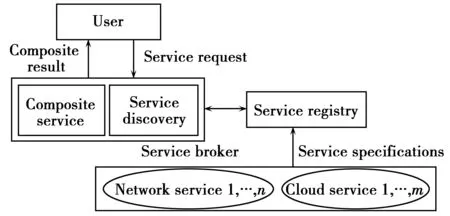
Fig.1 Network-Cloud convergence model
MCDM techniques were extensively applied in ranking a limited amount of decision alternatives characterized through multiple, typically conflicting attributes. Those techniques are mainly suitable for the decision problems where it is actually more significant and necessary to attain a cardinal preference or ranking of the substitutes in service quality issues[6]. MCDM provides strong decision-making methods in domains where a selection of the best alternative is highly complex. MCDM has been applied to many domains of the service quality evaluation in various industries, organizations, companies, etc. In this case, the criteria is specifically to be QoS attributes across networking and cloud domains including delay, pricing, computing power etc. The main purpose of applying MCDM method is to manage to select the best network-Cloud service form all candidates to maximize QoS performance.
Currently, there has been a large amount of research work on this topic but most of them focus on either Cloud computing or networking. Han et al[9] compared available services based on the network QoS and virtual machines but did not employ MCDM methods but highlighted the need to use the technique in Cloud service selection. Fig. 2 describes the service selection model we are about to apply, in which all the information about available services and their QoS performances is published by network and cloud providers through service descriptions at a service registry mentioned in Fig.1.
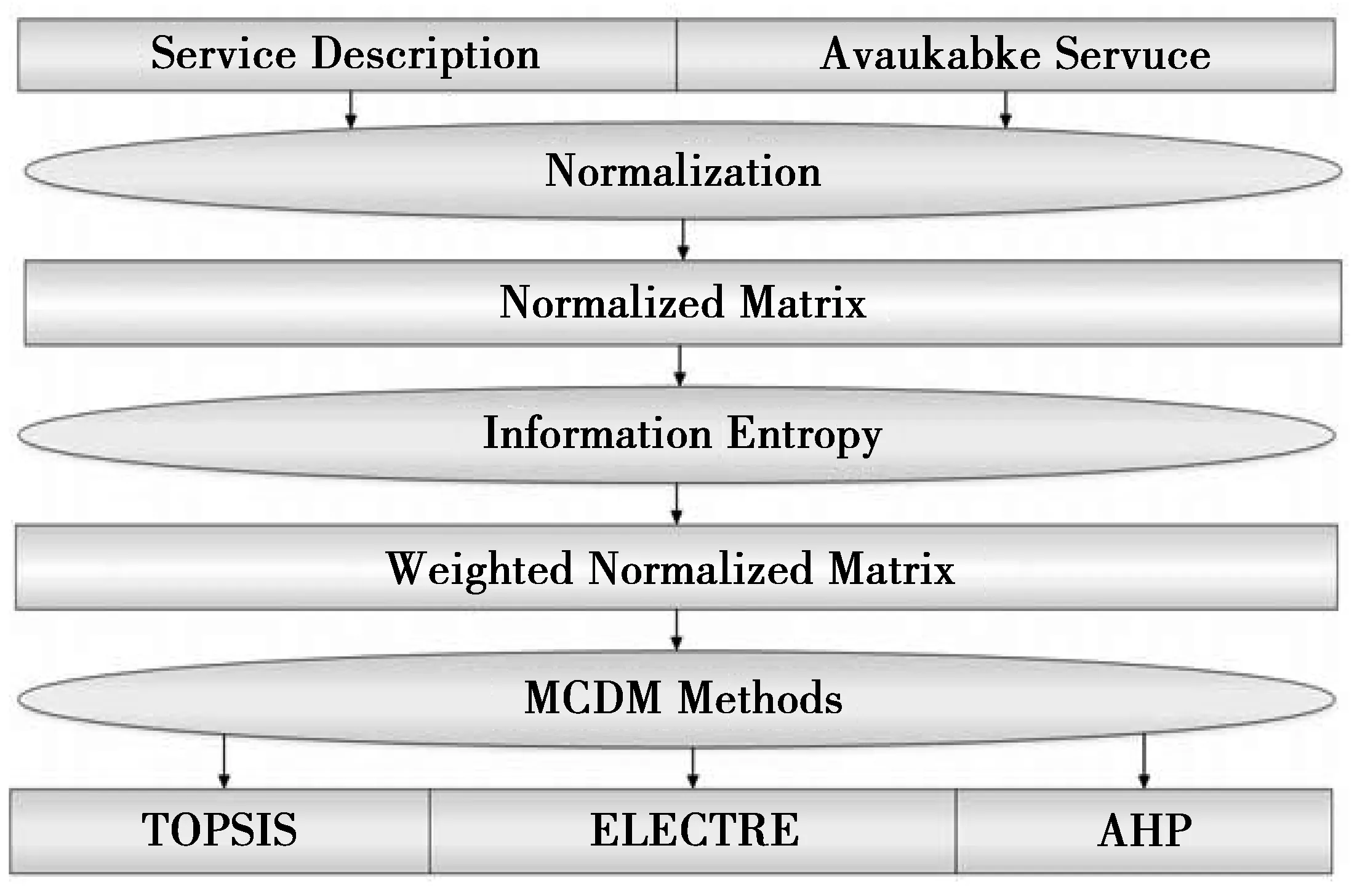
Fig.2 Service selection model
In this paper, we conduct a comparative study on MCDM algorithms for network-Cloud service selection. Three representative algorithms, i.e., TOPSIS, ELECTRE, and AHP are employed and comprehensively discussed from both theoretical and experimental perspectives. We show that the TOPSIS-based approach is proven to be the most effective method. TOPSIS can provide a more stable preference order than AHP with better time performance than ELECTRE.
The rest of the paper is organized as follows. The related work is introduced in section 1. Then in section 2, we formulate the problem of network-Cloud service selection as a MCDM problem and demonstrate the details about how three representative algorithms to deal with the problem. In section 3, simulation results of numerical experiments are shown. The conclusion is drawn at the end of the paper.
2Related work
Selecting service for network-Cloud has been intensively investigated recently. In[3], Huang et al. presented a system model for composite network-Cloud service provisioning and formulate QoS-aware network-Cloud service selection. In this work, a Network-as-a-Service (NaaS) paradigm is given to facilitate convergence of network and Cloud services, and then formulated QoS-aware network-Cloud service selection as a variant of multi-constrained optimal path (MCOP) problem and propose an exact algorithm for solving this problem.
Yoon et al. in[10] developed the Technique for order preference by similarity to ideal solution (TOPSIS) which is a popular MCDM solution. The technique is based on the concept that an ideal candidate alternative has the shortest distance from the positive ideal solution (PIS) and farthest distance from the negative ideal solution (NIS)[11]. TOPSIS as one of the MCDM methods is also combined with information entropy in[12] but uses the weighted Euclidean distances instead of the weighted decision matrix required by TOPSIS. Machine-readable rich representations of service properties, capabilities, and characteristics can be exploited by reasoning mechanisms to support automated discovery[13]. In order to consider the user’s preferences and expectations which is not present in current discovery techniques, a semi ordered preference model is introduced in[14] for content-based service discovery. The goal is to combat that problem and assist service providers and customers in discovering services that match their expectations and preferences. A fuzzy model for the selection of QoS-aware web services, prioritizing customer preferences, is described in[15]. Fuzzy TOPSIS was employed in[16] to assess the selection of web services. Triangular fuzzy numbers are used to represent linguistic variables as the weights of criteria and as the ratings of web services and can be converted into crisp numbers. This conversion performed using the graded mean integration representation method. The triangular fuzzy number is then used to obtain the PIS and the NIS.
A sophisticated formal mathematical decision model supporting the selection of Cloud computing services in a multi sourcing scenario is presented in[10] using the analytic hierarchy process (AHP). AHP is a MCDM approach which uses pairwise comparison to derive at a range of preferences from a set of alternatives which is achieved by determining the responsiveness of the selection process to rapidly changing business rules and criteria. AHP transforms the decision-making process from a subjective judgment into an objective determination. In[17] many criteria are considered, such as speed, bandwidth, price, security, and availability, and MCDM method is required to make correct decisions.
In[18], an approach to apply the ELECTRE algorithm has been developed so that it provides a complete ranking of the networks under consideration. elimination and choice expressing reality (ELECTRE) is another typical MCDM algorithm which performs pair-wise comparisons amongst the alternatives by separately using each of the criteria under consideration to establish outranking relationships among the alternatives. These relationships are then used to identify and eliminate alternatives that are dominated by others, yielding a smaller set of alternatives. ELECTRE does not provide a complete ranking of all the alternatives, which would be needed to find the top ranking candidate network.
In[7] a comparative analysis has shown that the Fuzzy TOPSIS method is better suited to the problem of supplier selection than Fuzzy AHP in regard to changes of alternatives and criteria, agility and number of criteria and alternative suppliers. The study suggests that preference order of Fuzzy AHP may change dramatically in respond to changes of alternatives or criteria, while Fuzzy TOPSIS produces consistent preference order. Fuzzy AHP is prone to ranking reversal when including a new alternative or a criterion, while Fuzzy TOPSIS produces consistent preference order.
In this work, we tackled the problem of service selection in converged network-Cloud context using MCDM methods. We comprehensively and thoroughly discuss the pros and cons of three representative MCDM approaches indicated above, i.e., TOPSIS, ELECTRE, and AHP.
3Comparison of three representative service selection algorithms for network-cloud convergence
We present MCDM methods i.e., TOPSIS, ELECTRE, and AHP to solve network-Cloud services selection (NCSS) problems. These approaches are combined with entropy-based weight aggregation process and they were compared to determine which one is preferable under the certain conditions. We also determine the workflow of its various algorithmns in order to provide concrete tutorials in the process of NCSS.
3.1Problem formulation
Network-Cloud service selection problem can be modeled by a decision matrix R where R={rij},1≤i≤m,1≤j≤n. Each row in R contains the numerical valuerijrepresenting the performance of a service against all criteria while each of the columns represent the performance of all services. The valuerijis a measurement of the performance ofSiunderCj. S is a finite set of services offered by the network-Cloud providers. S={Si},1≤i≤m. C is a finite set of the criteria on the basis of which services are selected. C={Cj},1≤j≤n.
(1)
The attributes C1,C2,C3,…,Cnrepresentcriteria1, 2, 3,…,n.TheaimistoselectthebestservicefromS1,S2,S3,…,SmthroughthreeMCDMapproaches.
3.2TOPSIS-based approach
ThisMCDMtechniqueisbasedontheconceptthatanidealcandidatealternativehastheshortestdistancefromthepositiveidealsolution(PIS)andfarthestdistancefromthenegativeidealsolution(NIS)[11].TOPSISasoneoftheMCDMmethodsisalsocombinedwithinformationentropyin[12]butusestheweightedEuclideandistancesinsteadoftheweighteddecisionmatrixrequiredbyTOPSIS.
3.2.1Weights calculation
OneofthemostcriticalaspectsofMCDMistheissueofweightswhichindicatestheimportanceofthecriteria.Theweightsoftheattributesareobtainedbyinformationentropytheory,aconceptthatwasfirstintroducedbyShannonin1949[19].TheinformationentropyattributeCjcan be expressed by

(2)
The weights of the attributesCjare
(3)
W is a weight set,
(4)
3.2.2TOPSIS
Step 1For the decision matrix, determine themavailable services and thenavailable criteria.
Step 2Normalize the decision matrix R in order for the QoS values of different criteria to be comparable by using the following equation:
(5)
After the computation ofnij, the normalized decision matrix N is as follows:
(6)
Step 3Incorporate weights. It is sometimes supplied by the user of the cloud according to the user preference or can be calculated by using Shannon Entropy method. The weighted normalized decision matrix denoted as V is:
(7)
Step 4Determine the positive ideal solution (PIS) and the negative ideal solution (NIS), respectively, that is:
(8)
where A+and A-are PIS and NIS, andJandJ-are benefits and cost criteria respectively. It should be noted that all the criteria are benefits to aid comparison.

(10)

(11)
Step 6Calculate the relative closeness to the PIS. The relative closeness to the serviceSiwith respect to the PIS A+is defined as
(12)
3.3ELECTRE-based approach
Elimination and choice expressing reality (ELECTRE) was developed by Roy and colleagues at the SEMA Consultancy Company in 1991. Since then, several versions of this method have been developed (ELECTRE I, ELECTRE II, ELECTRE III, ELECTRE IV, ELECTRE IS, and ELECTRE TRI (ELECTRE Tree)). ELECTRE consists of two sets of parameters: the importance coefficient and the veto thresholds[20].). ELECTRE is an outranking MCDM method. Unlike TOPSIS methods, it performs a pairwise comparison between the alternatives in order to determine their outranking relationships. These relationships are then used to identify and eliminate alternatives that are dominated by others, yielding a smaller set of alternatives. The ELECTRE method handles discrete criteria that are both quantitative and qualitative in nature, providing complete ordering of the alternatives. Alternatives are preferred taken into consideration the criteria of both the concordance and discordance[4,21].
Step 1Normalize the decision matrix R. This process transforms the various units of the decision matrix R in to dimensionless comparable units as indicated in equation (1)
(13)
Therefore, the normalized the decision matrix X is:
(14)
Where mandnarethenumberofalternativesandcriteriarespectivelyandxijisthedimensionlessmeasureofthei-thalternativeofthej-thcriterion.
Step 2Calculate weighted normalized decision matrix
(15)

Step 3Determine the concordance and discordance sets. The concordance setCklof two alternativeSkandSl, wherem,k,l≥1 , is a set of all criteria for whichSkis preferred toSlprovided the following is true:
(16)
The complementary set (discordance) is defined as:
(17)
Step 4Concordance and discordance matrices. Construct the concordance and the discordance matrices, wherein the concordance matrix C is calculated by the means of its index. The concordance indexCklis sum total of the weights of the criteria it contained. That is, when the following is true:
(18)
The relative importance of the alternativeSkwith respect to alternativeSlis the concordant index. Apparently, 0≤Ckl≤1 .The concordance index C is defined as
(19)
The matrix C entries should not be defined whenk=l.
The discordance matrix D on the other hand is when alternativeSkis worse than alternativeSland therefore the discordance elementsdklare defined as
(20)
The discordance matrix is defined as follows:
(21)
Note that the matrix D is not defined whenk=l.
Note also that matrices D and C arem×mmatrices and are asymmetric (not symmetric)

(22)
The concordance dominance matrix F which is based on the threshold value is defined as
(23)

(24)
The discordance dominance matrix G is also determined as
(25)
Step 6The traditional aggregate dominance matrix of ELECTRE is able to provide just a partial preference of ordering of selecting network-Cloud services under consideration. In a view to address that miss normal,[18] applied a second approach call the concordance index that is calculated as
(26)
whereCiis a measure of dominance ofSiover alternatives.
The discordance index on the other hand defined the weakness of alternativeSiwhen compare with a measure of weakness of other alternatives fromSiwhich is calculated as
(27)
The alternative with the highest value of the net concordance index C and the lowest value of the discordance index D would be considered as the preferred one but there is a possibility that the highest value of the concordance index and the lowest value of the discordance index is not the same. In other to further address that issue, the alternatives are ranked based on the concordance and discordance indices and each alternative is ranked based on the average of the two rankings. The highest average value of the two rankings is considered as the best network-Cloud services alternative.
3.4AHP-based approach
The analytic hierarchy process (AHP) (Saaty 1990, 1994) is a widely used outranking MCDM method for network-Cloud services selection(NCSS) that is used to organize and support service information that based its rating on three main steps: decomposition, comparative judgement and synthesis[22]. The study in[7] suggests that preference order of Fuzzy AHP may change dramatically in respond to changes of alternatives or criteria, while Fuzzy TOPSIS produces consistent preference order. The final phase of the AHP is to structure the decision matrix which hasmnumber of alternatives of NCSS andnnumber of criteria on the basis of which services are selected in equation (1). The vector (ri1,ri2,…,rin) for eachiin the eigenvector ofn×nreciprocal matrix is determine by pairwise comparison of the M alternative of thei-th criterion where
(28)
At the final analysis, the best AHP in the maximum case is described in the following equation:

(29)
When equation (28) is applied to the AHP, all the columns are normalized to one.
4Numerical experiments
The experiment is conducted by a laptop with 4 GB memory and 2.3 GHz of processor. Meanwhile, MATLAB is utilized to input, trim and process data as well as to run numerical simulations. We randomly initialize two sets of the raw input to mimic the diversity of real network-Cloud service conditions. In this paper, there are two practical examples with different sets of the raw input performed.
4.1Results
In the first set of experiment all QoS attributes of each service is presented in a 5×6 input matrix.
Tab.1 shows the raw input data for the three MCDM methods involved in which each criterion has its own scale. The attributesC1,…,C5represents the storage capacity, CPU (central processing unit) computing power, bandwidth, price effectiveness and speed respectively
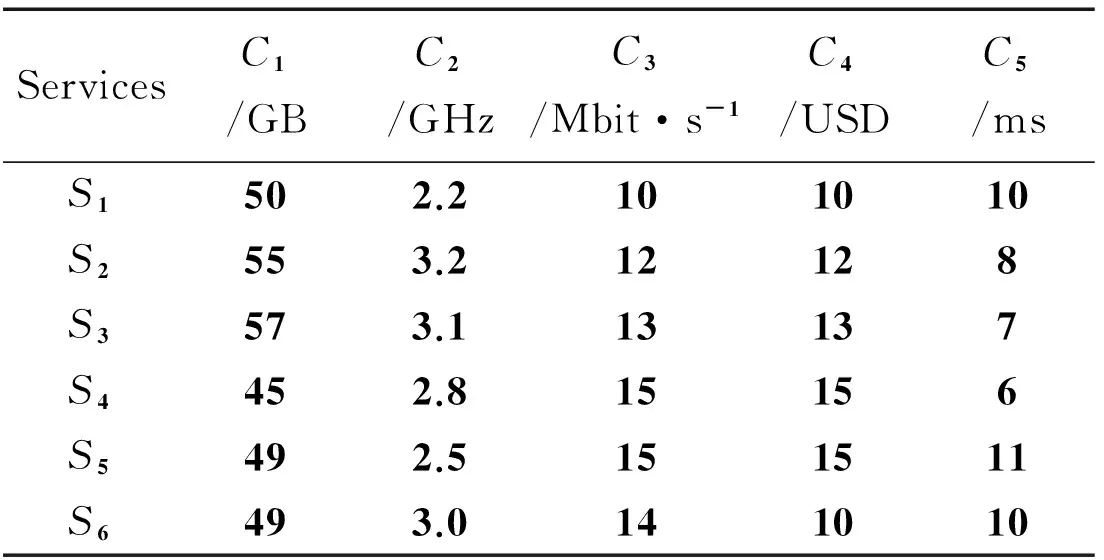
Tab.1 Input data of 5×6 for all MCDM methods
The normalization method applied in Tab.2 is needed in order to let the QoS values of different criteria can be equally comparable. Notice that AHP will need a different normalization method.

Tab.2 Normalized data for TOPSIS and ELECTRE
Calculated by equation (3), entropy weighs for all MCDM methods are shown in Tab.3 which can indicate how much each attribute can affect the ranking result.

Tab.3 Entropy weighs for all MCDM methods
Normalized data will be processed using entropy weighs, and the weighted normalized data for TOPSIS and ELECTRE is displayed in Tab.4 calculated by equation (7).

Tab.4 Weighted normalized for TOPSIS and ELECTRE
The key ranking indicators in TOPSIS method are PIS and NIS are shown in Tab.5. Based on PIS and NIS, final result relative closeness will be calculated easily.

Tab.5 PIS and NIS for TOPSIS
Tab.6 shows rank results of TOPSIS. Service 5 which rank the highest with 0.871 6 was selected with an elapsed time is 0.005 803 seconds.

Tab.6 Rank results of TOPSIS (relative closeness)
Tab.7 and Tab.8 show the concordance results and discordance results of ELECTRE which are used to identify the outrank relationships among all alternative services in ELECTRE.
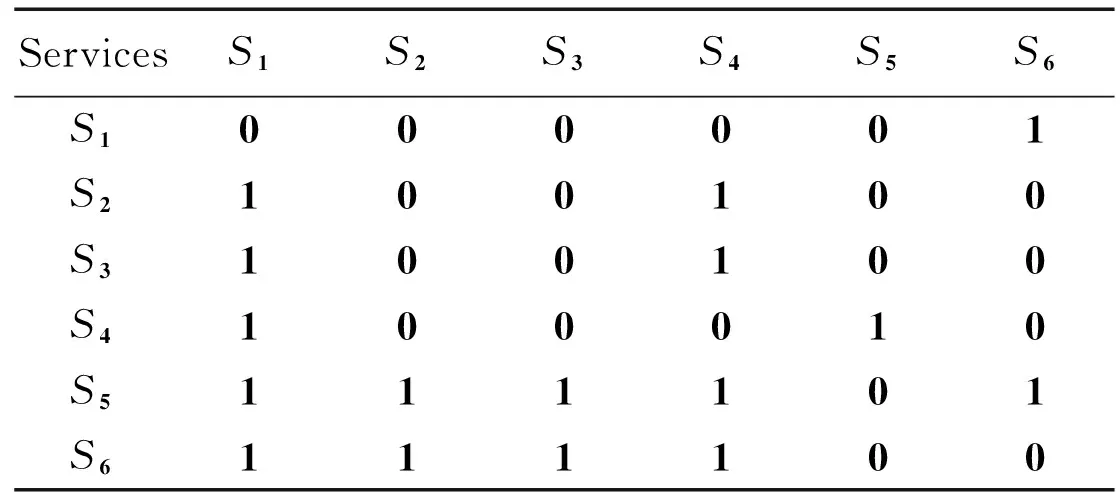
Tab.7 Concordance dominance matrix of ELECTRE
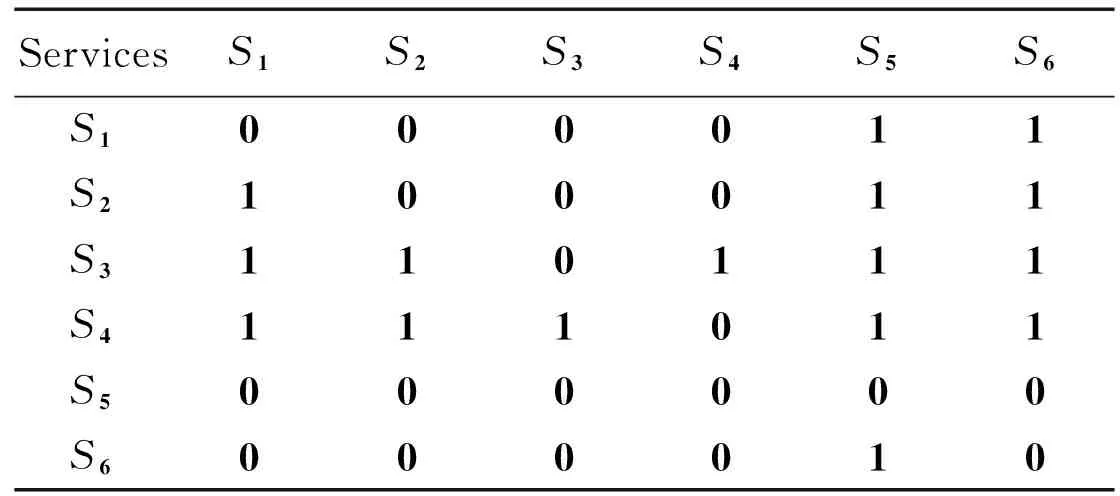
Tab.8 Discordance dominance matrix of ELECTRE
Tab.9 shows rank result of ELECTRE. Service 3 which ranks the highest was selected with an elapsed time of 0.014 429 seconds.
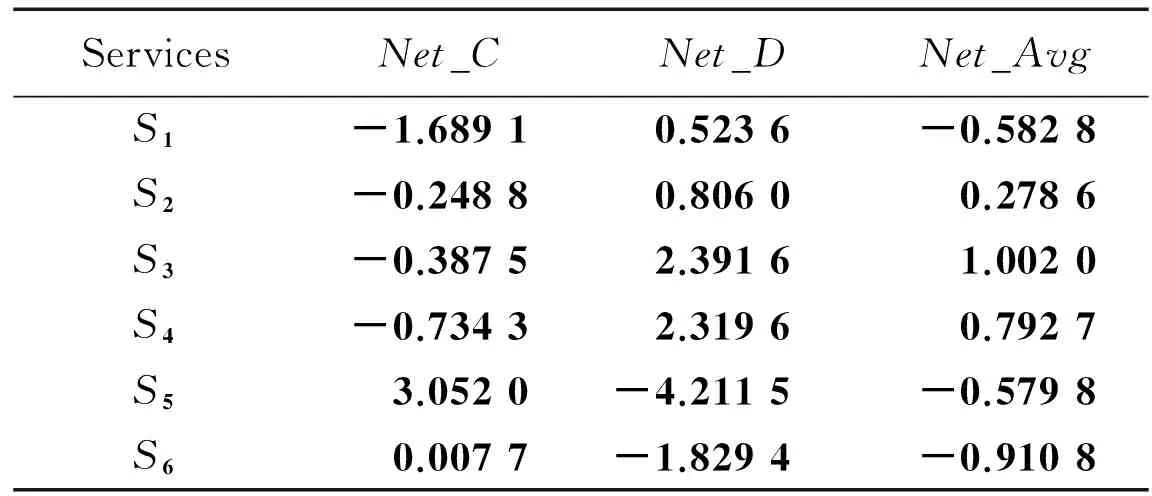
Tab.9 Rank Result of ELECTRE (net average)
In the rank results of AHP indicated in Tab.10, Service 5 with the highest total which is 0.193 3 is selected with an elapsed time is 0.003 900 seconds.
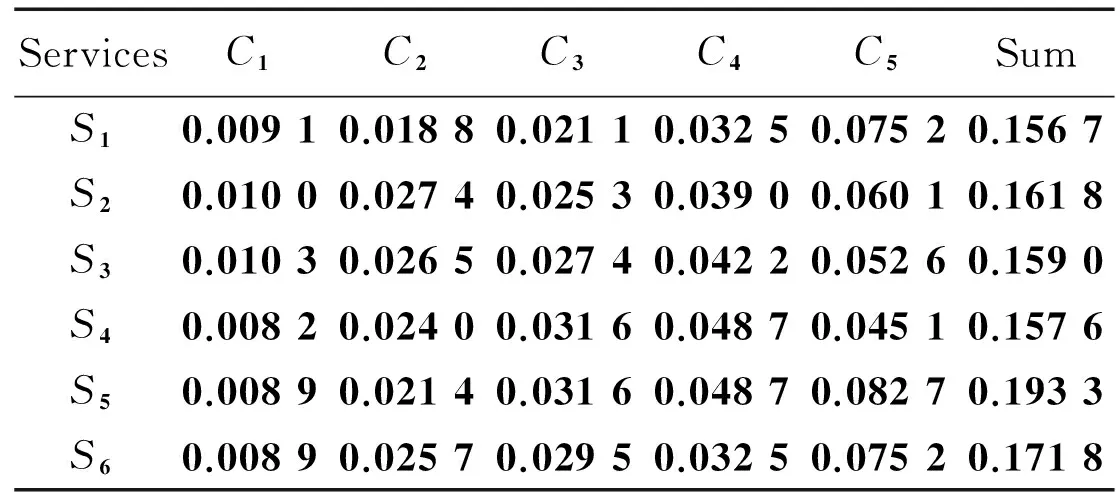
Tab.10 Weighted normalized data of the AHP
Normalization is also needed in AHP, but in AHP the calculation of normalized data is based on equation (28) and deferent from the other two methods. Notice that all the columns in Tab.11 are normalized to one.
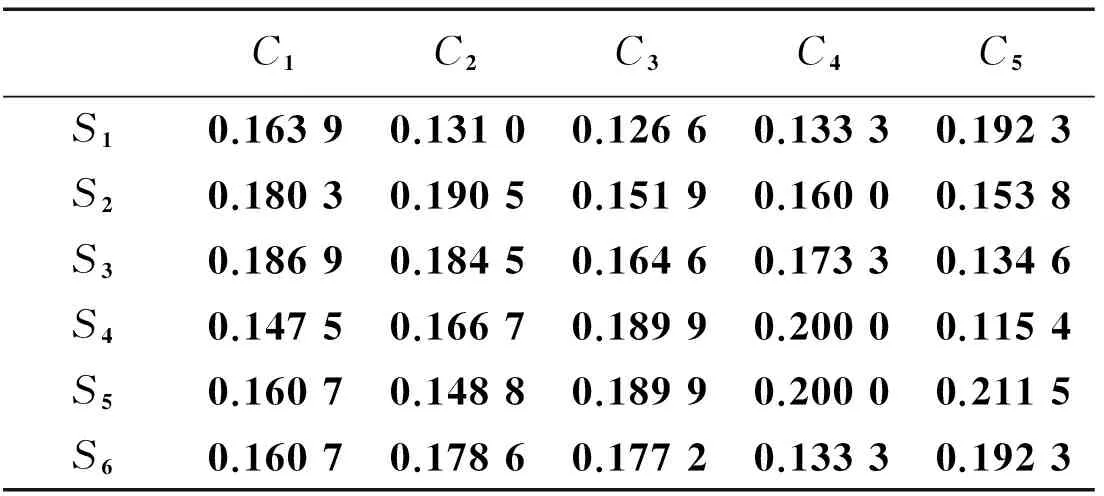
Tab.11 Normalized data of the AHP
In the second set of experiment, we conduct the evaluation with a different input matrix with one more QoS factor. All QoS information is presented in the following 6×6 input matrix. Tab.12 shows the raw input data for the second set of experiment. The attributes.C1, …,C6represents the storage capacity, CPU (central processing unit) computing power, bandwidth, price effectiveness, speed and power effectiveness respectively.
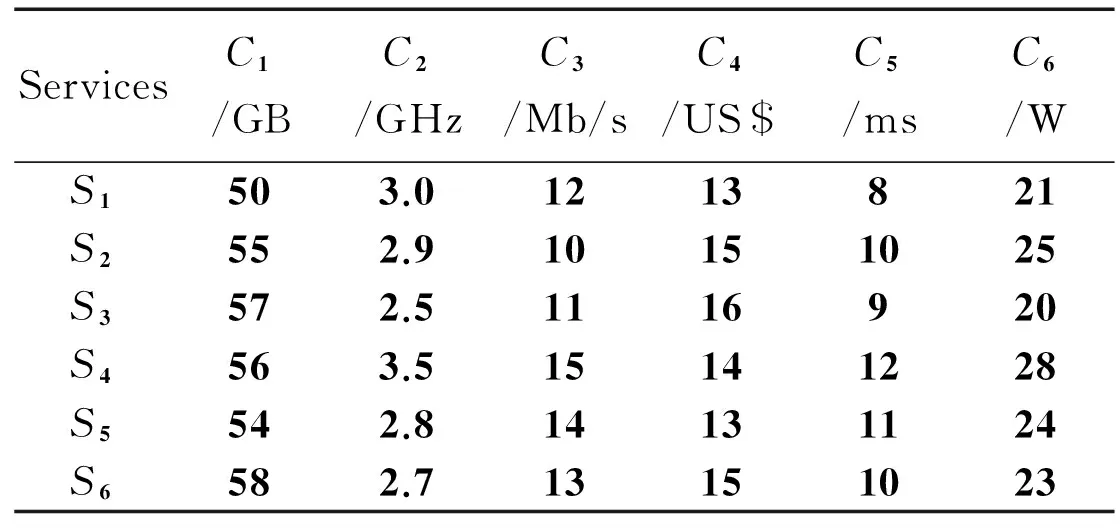
Tab.12 Input data of 6×6 for all MCDM methods
In order not to congest this work with tables, the following results obtained from Tab.12 are shown in Tab. 13 with their elapsed time for comparison.

Tab.13 Results of the second set of experiment
4.2Discussion
The execution time reflecting the computational complexity of each algorithm is shown in Fig.3. It can be observed that the complexity of ELECTRE is significantly greater than other two with respect to the problem size. This means that such an approach may hardly to be applied to large-scale problems. In contrast, the execution time of TOPSIS and AHP increase with the problem size in a linear manner.
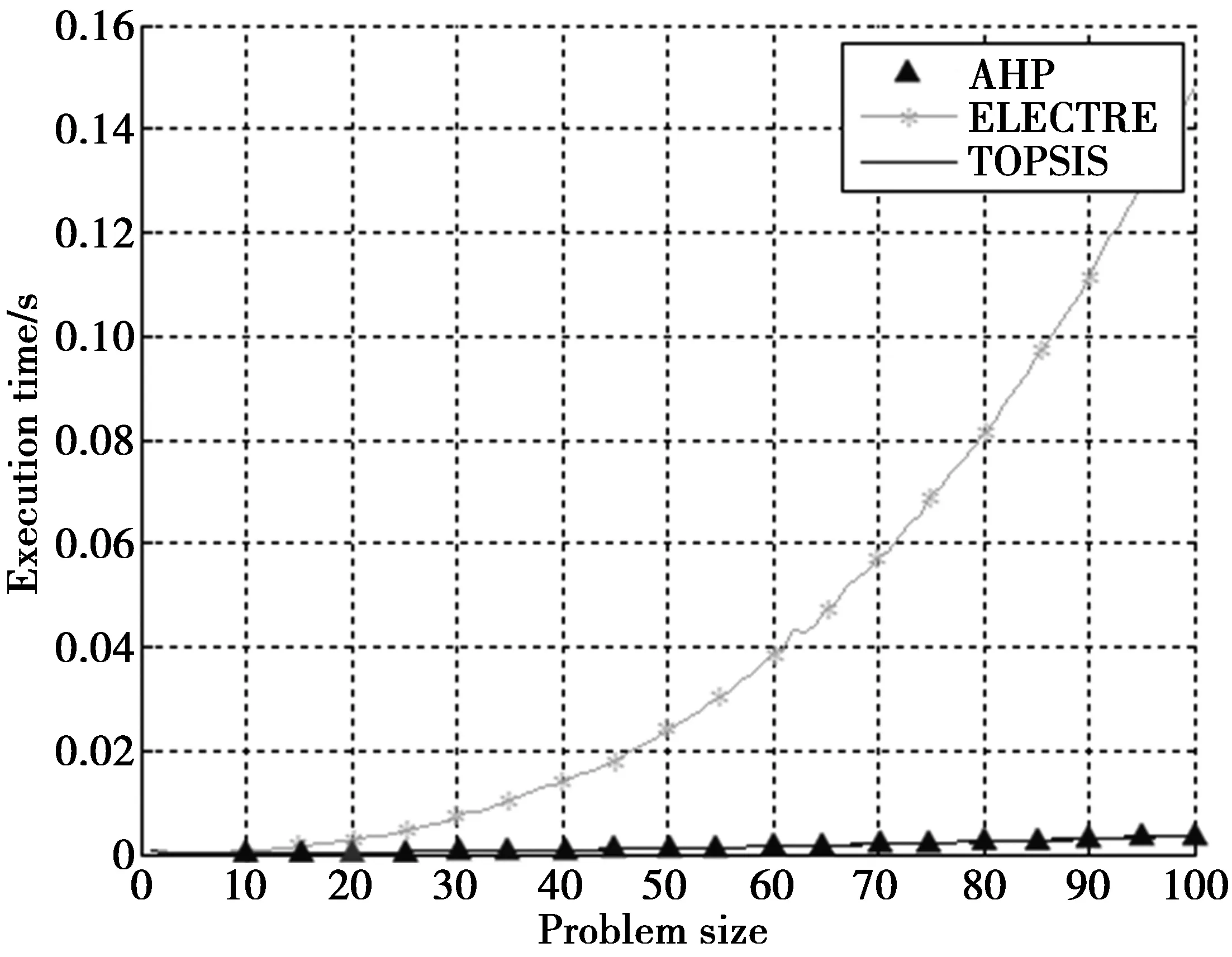
Fig.3 Computational complexity
Although both TOPSIS and ELECTRE have the same weighted normalized table, they can have different performance on both testing cases. AHP on the other hand, which uses a different normalization technique selects the same service with TOPSIS on both cases. The ranking results of AHP and TOPSIS are approximately the same. Since TOPSIS is famous for its stable preference order when including new alternatives or criteria while AHP is prone to ranking reversal, TOPSIS is best choice.
In general, TOPSIS can provide a more stable analysis than AHP without compromising time performance. Therefore, TOPSIS is the most effective method among three.
5Conclusions
Cloud computing is a computing model which enables the on demand access to shared computing resources. Networking plays a pivotal role in Cloud computing that facilitates data communication among users and various Cloud providers through the internet. The growing number of Cloud services that have a wide ranging choices for potential Cloud consumers have made service selection a crucial issue. Selecting the optimal set of service from the functionally equivalent services can be formulated as a MCDM problem. In this paper, we conduct a comparative study on MCDM algorithms for network-Cloud service selection. Three representative algorithms, i.e., TOPSIS, ELECTRE, and AHP have been employed and comprehensively discussed from both theoretical and experimental perspectives. We have shown that TOPSIS can have the best time performance when three methods find the same solution. This provides in-deepth insights into the design of converged network-Cloud service selection algorithm.
References
[1]MELL P, GRANCE T. The NIST definition of Cloud computing[J]. Communications of the Acm, 2011, 53(6):50-50.
[2]ARMBRUST M, FOX A, GRIFFITH R, et al. Above the Clouds: A berkeley view of Cloud computing[EB/OL].[2016-1-2] . http://www.eecs.berkeley.edu/Pubs/TechRpts/2009/EECS-2009-28.pdf.
[3]HUANG J, LIU G, DUAN Q. On modeling and optimization for composite network-Cloud service provisioning[J]. Journal of Network and Computer Applications, 2014, 45(1):35-43.
[4]DUAN Q.Modeling and performance analysis on network virtualization for composite network-Cloud service provisioning[C]//The 7th IEEE World Congress on Services(SERVICES2011).Washington,DC:IEEE,2011:548-555.
[5]DUAN Q,YAN Y,VASILAKOS V.A survey on service-oriented network virtualization toward convergence of networking and Cloud computing[J].Network and Service Management,IEEE Transactions on,2012,9(4):373-392.[6]MARDANI A, JUSOH A, ZAVADSKAS E K, et al. Application of multiple criteria decision making techniques and approaches to evaluating of service quality: a systematic review of the literature[J]. Journal of Business Economics and Management, 2015(16):1034-1068.
[7]LIMA F R, OSIRO L, CARPINETTI L. A comparison between Fuzzy AHP and Fuzzy TOPSIS methods to supplier selection[J]. Applied Soft Computing, 2014(21):194-209.
[8]MOAYERI M, SHAHVARANI A, BEHZADI M. Comparison of fuzzy AHP and fuzzy TOPSIS methods for math teachers selection[J].Indian Journal of Science and Technology,2015,8(13):1-10.
[9]HAN S,HASSAN M M,YOON C,et al.Efficient service recommendation system for Cloud computing market[C]//Proceedings of the 2nd International Conference on Interaction Sciences Information Technology,Culture and Human-ICIS ’09.New York,NY,USA:ACM,2009:839-845.
[10] MARTENS B,TEUTEBERG F.Decision-making in Cloud computing environments:a cost and risk based approach[J].Information Systems Frontiers,2012,14(4):71-893.
[11] BEHZADIAN M, OTAGHSARA S K, YAZDANI M, et al. A state-of the-art survey of TOPSIS applications[J]. Expert Systems with Applications, 2012, 39(17):13051-13069.
[12] HUANG J. Combining entropy weight and topsis method for information system selection[C]. //Cybernetics and Intelligent Systems, 2008 IEEE Conference on IEEE. Chengdu: IEEE, 2008: 1281-1284.
[13] CASATI F, ILNICKI S, JIN L, et al. Adaptive and dynamic service composition in eFlow[M]// Advanced Information Systems Engineering, vol. 1789 of Lecture Notes in Computer Science . San Jose, CA, USA: Springer Berlin Heidelberg, 2000:13-31.
[14] HUANG C-L, LO C-C, WANG P, et al. Applying semi-order preference model in content-based service discovery[J]. International Journal of Electronic Business Management, 2007,5(1):48-58.
[15] WANG P, CHAO K-M, LO C-C. On optimal decision for QoS-aware composite service selection[J]. Expert Systems with Applications, 2010, 37(1):440-449.
[16] YASSA S, CHELOUAH R, KADIMA H, et al. Multi-objective approach for energy-aware workflow scheduling in Cloud computing environments[J]. The Scientific World Journal, 2013(3-4):1-13.
[17] WU H, WANG Q, WOLTER K. Methods of Cloud-path selection for offloading in mobile Cloud computing systems[C]//Proceedings of the 4th IEEE International Conference on Cloud Computing Technology and Science (CloudCom ’12). Taibei:IEEE,2012:443-448.
[18] BARI F, LEUNG V. Application of ELECTRE to network selection in a hetereogeneous wireless network environment[C]// Wireless Communications and Networking Conference, 2007:3810-3815.
[19] SHANNON C E, WEAVER W. A mathematical theory of communication[J]. The Bell System Technical Journal, 1948 (27): 379-423, 623-656.
[20] MOHAMMADSHAHI Y. A state-of-art survey on TQM applications using MCDM techniques [J]. Decision Science Letters, 2013, 2(3):125-134.
[21] CRISTOBAL J R S. Multi-criteria decision-making in the selection of a renewable energy project in Spain: the Vikor method [J]. Renewable Energy, 2011, 36(2): 498-502.
[22] YOON K. A reconciliation among discrete compromise solutions [J]. Journal of the Operational Research Society, 1987, 38(3):277-286.
Biographies:

JALLOH Minkailu Mohamed(1982-), Male, The Republic of Sierra Leone, Master Graduate, Research Interests: QoS provisioning in Cloud Computing. E-mail: minks2.jalloh@yahoo.com.

ZHOU Yide(1994-), Male, Sichuan, Undergraduate, Research Interests:Next Generation Network. E-mail:choeeden@gmail.com.

HUANG Jun(1982-), Male, Hubei, Professor, PhD, Postgraduate Tutor, Research Interests: New Network Technology. E-mail:jhuang@cqupt.edu.cn.
(编辑:魏琴芳)
DOI:10.3979/j.issn.1673-825X.2016.04.020
收稿日期:2016-04-11修订日期:2016-07-04通讯作者:HUANG Jun jhuang@cqupt.edu.cn
Foundation Item:The National Natural Science Foundation of China(61309031)
CLC number:TP391
Document code:A
网络-云组合服务选择算法对比研究
JALLOH Minkailu Mohamed1,周易德1,黄俊2
(1.重庆邮电大学 通信与信息工程学院,重庆 400065; 2.重庆邮电大学 电子信息与网络工程研究院,重庆 400065)
摘要:网络的性能在云服务交付过程中发挥着至关重要的作用。对于终端用户,所获得的服务实质是一种网络-云的组合服务,即云计算用户所得到的服务既包含云服务还包含网络服务。如何从众多候选服务中选出最佳的服务提供给用户已成为云计算研究领域的重要课题。解决该问题需要综合考虑网络和云的诸多服务质量参数,例如延迟、价格和计算能力等。针对该问题将其描述为一类多准则决策(multi-criteria decision making,MCDM)问题,并对比了TOPSIS(technique for order preference by similarity to an ideal solution),ELECTRE(elimination and choice expressing reality)和AHP( analytic hierarchy process)3种常见的多准则决策算法。利用理论分析和数值计算方法对3种算法在网络-云服务选择的优劣展开了对比和探讨。
关键词:云计算;多准则决策;服务质量;面向服务的体系结构;TOPSIS;ELECTRE;AHP
